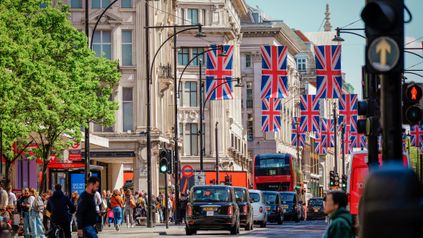Victoria Henson serves as the Director of Bureau du Champagne in the UK, the extended arm of the prestigious Comité Champagne – the trade association that champions the interests of Champagne growers and houses worldwide. With a career steeped in expertise and a passion for the luxury sector, Victoria is at the forefront of shaping the global Champagne narrative.
Victoria sat down with Lydia Christie, Head of Retail at Howard Kennedy, to explore the vital link between the heritage of champagne and its evolving role in the luxury market.
Victoria, how has the global Champagne market evolved in recent years, and what trends are you seeing in consumer preferences?
The Champagne market has seen significant changes, particularly in response to post-COVID consumer behaviour. People are now prioritising quality over quantity, opting for a single glass of champagne rather than an entire bottle of another wine. There’s also a growing appreciation for diverse styles, such as rosé and low-dosage champagnes. Political and economic factors, including elections, global conflicts, and the cost of living crisis, have further influenced purchasing habits. Despite these challenges, Champagne’s luxurious image and exclusivity remain strong, continuing to attract consumers worldwide.
Champagne has long been associated with luxury and exclusivity. How does the industry maintain this image while adapting to modern consumer demands?
Champagne’s uniqueness lies in its heritage and exclusivity. It can only be produced in the Champagne region of France, with over 300 years of history and innovation behind it. Its association with pop culture and celebratory moments adds to its allure. Additionally, the industry is highly adaptable, responding to challenges such as climate change with sustainability initiatives and research, ensuring its enduring appeal.
How do you see that relationship evolving as younger generations gain purchasing power?
Consumers are becoming more adventurous, exploring different styles like blanc de blancs, blanc de noirs, and extra brut or zero-dosage options. Younger generations, in particular, are drinking less but focusing on quality and unique experiences. This trend is driving growth in key export markets such as the UK and US, but also new markets such as Canada, UAE, Sweden, and South Korea, which are also showing increasing interest. Exports now represent 56% of total Champagne sales, compared to 45% 10 years ago.
How is the Champagne sector addressing environmental concerns, and what initiatives are being spearheaded by Comité Champagne?
Champagne was the first winegrowing region to assess its carbon footprint and has set an ambitious goal of reaching net zero by 2050. Significant progress has already been made, with 100% of wine effluence treated, over 90% of industrial waste processed, and a 20% reduction in the carbon footprint per bottle since 2003. Currently, 70% of vineyard areas are environmentally certified, with plans to achieve 100% certification by 2030. The industry is also exploring innovative solutions such as insect-proof greenhouses and alternative grape varieties to adapt to climate change.
How are Champagne growers and houses adapting their strategies to remain competitive while preserving their heritage in the digital age?
Digital tools are enhancing the consumer experience and education within the industry. QR codes now provide instant access to tasting notes and food pairing suggestions, making Champagne more accessible and versatile. These innovations also support training in the hospitality sector, ensuring Champagne remains relevant across a variety of dining occasions.
Looking ahead, what are your predictions for the Champagne market in the coming year, and how do you see it aligning with broader trends in the luxury and retail sectors?
Champagne’s appeal is rooted in its heritage, quality, and versatility. It has an enduring association with celebrations and special moments, making it a luxury that consumers aspire to enjoy. Whether celebrating a promotion, a special occasion, or simply a good day, Champagne remains a symbol of joy and sophistication. Champagne is set to remain resilient and relevant in the luxury and retail sectors. Its adaptability, coupled with ongoing innovation and sustainability efforts, ensures that it continues to captivate consumers worldwide. As Coco Chanel once said, “I only drink champagne on two occasions: when I am in love and when I am not.” That sentiment perfectly captures Champagne’s timeless allure.


/Passle/5ae9851e7bae7607b4016f56/MediaLibrary/Images/2025-11-04-14-17-12-271-690a0ae868499c4238aff598.jpg)

